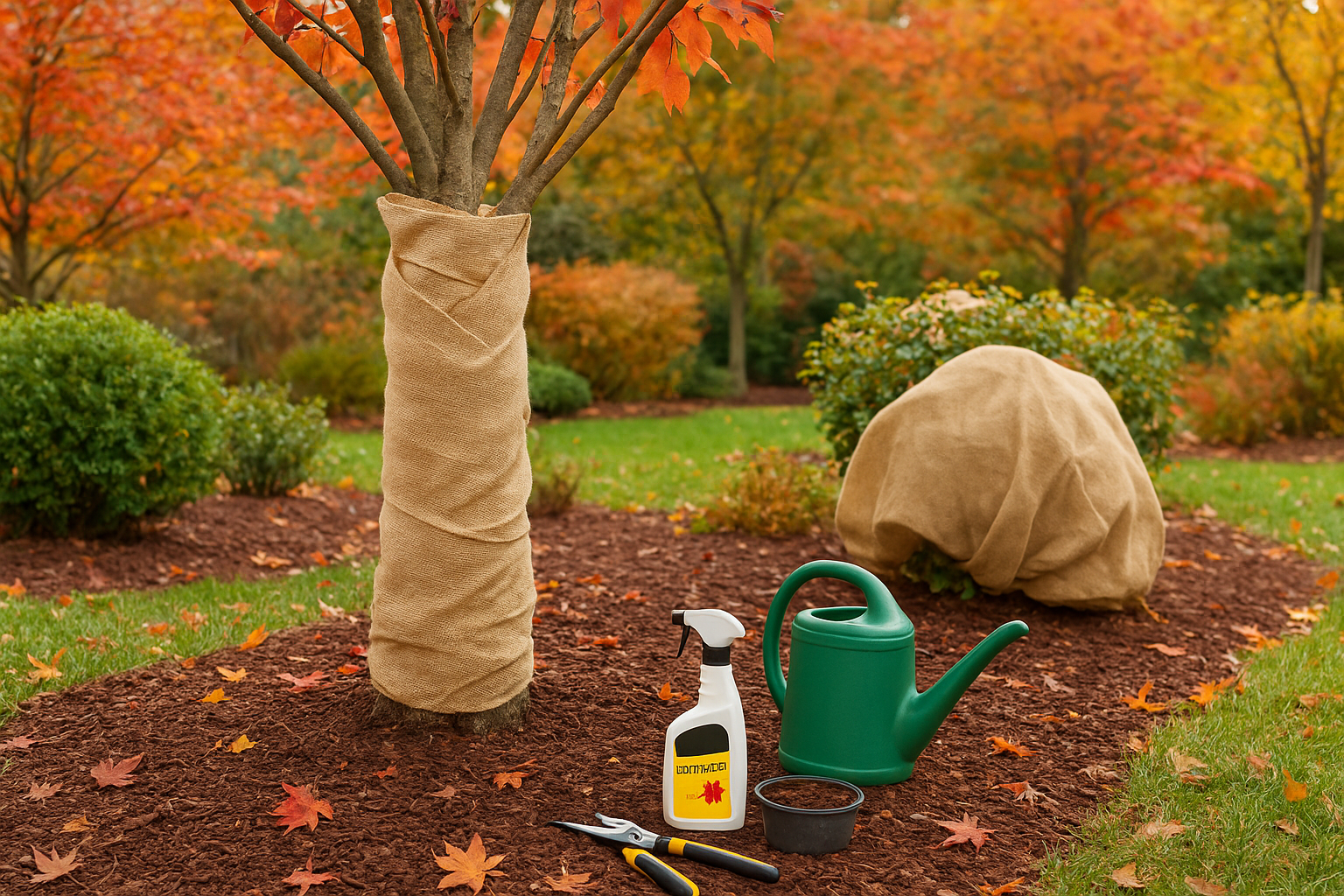🌳 Protecting Trees and Shrubs from Fall Pests and Weather
As the weather cools and the leaves begin to drop, your trees and shrubs are entering a vulnerable season.
Fall may seem peaceful, but it’s also a time when pests, diseases, and harsh weather can do real damage to your landscape.
Taking the right precautions now can keep your plants healthy through winter and ensure they thrive in spring.
Here’s LawnMart’s guide to protecting your trees and shrubs from fall pests and unpredictable weather.
🐛 1.
Inspect for Pests and Disease
Before the cold sets in, give your trees and shrubs a close inspection.
Look for:
Discolored leaves or spotting (signs of fungal infection)
Chewed or curling foliage (indicating insect feeding)
Sticky residue or webbing (possible aphid or mite activity)
💡 LawnMart Tip: Prune off any infected branches and clean up fallen leaves or debris around the base—this removes overwintering insect eggs and fungal spores.
🪲 2.
Control Insects Naturally
In fall, many pests seek shelter in bark crevices or soil near plant roots.
To protect your trees and shrubs:
Apply horticultural oil or neem oil to suffocate overwintering insect eggs.
Encourage beneficial insects like ladybugs and lacewings to keep pest populations under control.
Avoid chemical pesticides—they can harm pollinators and soil health.
💡 LawnMart Tip: LawnMart offers a full line of eco-friendly pest control solutions safe for your yard and the environment.
🧹 3.
Clean the Ground Around Trees and Shrubs
Fallen leaves, fruit, and dead branches attract pests and create ideal hiding spots for disease.
Rake up fallen debris from around trunks and garden beds.
Dispose of diseased plant material (don’t compost it).
Add mulch after cleanup to protect roots and suppress weeds.
A tidy base keeps pests away and helps your soil retain moisture.
🌿 4.
Mulch for Winter Protection
Mulching isn’t just for aesthetics—it’s one of the best ways to shield your plants from cold stress.
Spread 2–4 inches of mulch around the base of trees and shrubs.
Keep mulch a few inches away from the trunk to prevent rot.
Use shredded bark, leaves, or wood chips for natural insulation.
💡 LawnMart Tip: Mulch helps stabilize soil temperature, conserve water, and protect roots from freeze-thaw cycles.
🌬 5.
Wrap and Shield Young Trees
Newly planted or thin-barked trees are especially vulnerable to frost cracks, windburn, and sunscald.
Wrap trunks with tree wrap or burlap from the base up to the first branches.
For evergreens or delicate shrubs, use burlap screens to block harsh winds and snow.
Remove wraps in early spring to prevent trapped moisture.
💡 LawnMart Tip: Use LawnMart’s Tree Protection Kits for easy, weather-resistant wrapping solutions.
💧 6.
Water Before the Ground Freezes
Even in cool weather, your trees and shrubs need moisture to survive winter dormancy.
Water deeply once a week until the ground freezes.
Focus on the root zone, not the trunk.
Avoid watering late in the evening to reduce risk of ice formation.
Hydrated roots handle temperature fluctuations and frost stress much better than dry ones.
🌤 7.
Prune Carefully (or Wait Until Spring)
Remove any dead, diseased, or damaged branches to prevent breakage under snow and ice.
However, avoid heavy pruning in fall—many trees and shrubs are entering dormancy and can be stressed by excessive cuts.
💡 LawnMart Tip: Save major pruning for late winter or early spring when plants are fully dormant.
Protecting Trees and Shrubs
from Fall Pests and Weather
